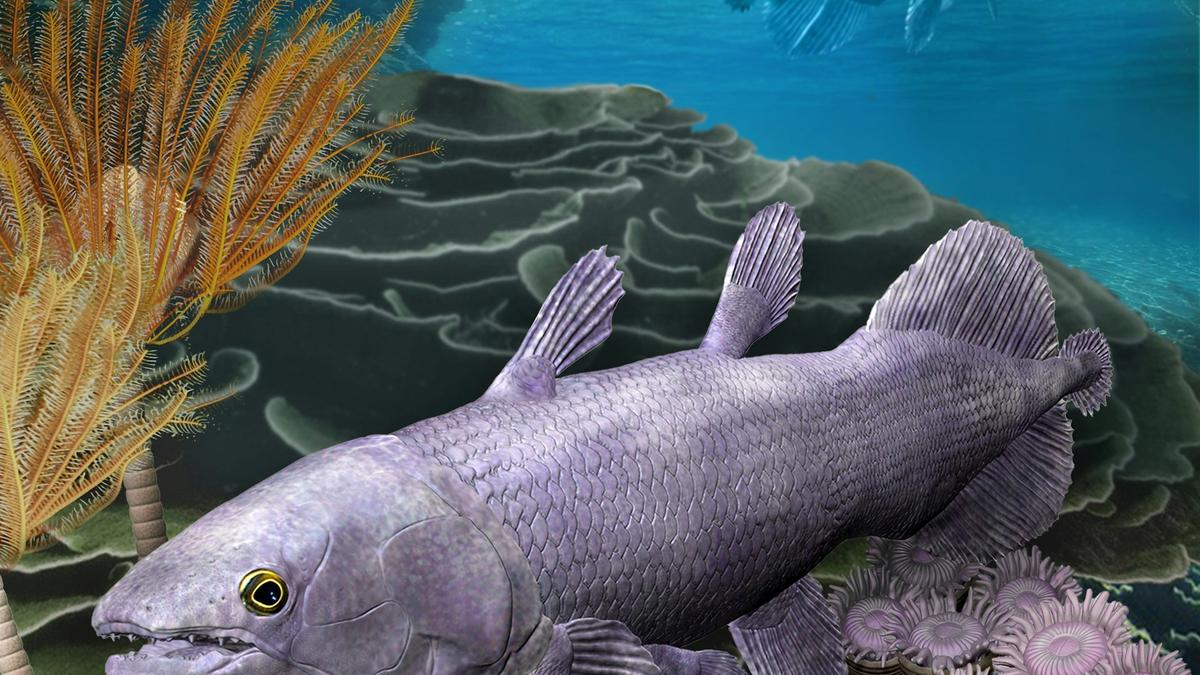
Exceptional new fish fossil sparks rethink of how earth’s geology drives evolution Premium
The Hindu
Coelacanths are deep-sea fish that live off the coasts of southern Africa and Indonesia and can reach up to two metres in length. The evolution of these living fossils have an intriguing influence: tectonic activity.
Coelacanths are deep-sea fish that live off the coasts of southern Africa and Indonesia and can reach up to two metres in length. For a long time, scientists believed they were extinct.
In new research published in Nature Communications, we reveal the best-preserved coelacanth fossil ever found from the ancient period hundreds of millions of years ago when these ancient sea-dwellers first evolved. The fossil comes from the Gogo Formation on Gooniyandi Country in northern Western Australia.
We also studied the evolution of all the hundreds of coelacanth species we know from the fossil record to find out what drove the creation of new species across the aeons.
The answer came as a surprise: the greatest influence on coelacanth evolution was not ocean temperature or oxygen levels but tectonic activity. When the vast plates of Earth’s crust were moving around more, new species were more likely to appear.
Coelacanths are “lobe-finned” fish, which means they have robust bones in their fins a bit like the bones in our arms. Scientists believe they are more closely related to tetrapods (animals with backbones and four limbs, such as frogs, emus and humans) than to most other fishes.
Coelacanths have been around for a long time. The oldest known fossils are more than 410 million years old. But because these fossils are mostly fragments, we don’t know a lot about what the earliest coelacanths were like.
Later, during the age of dinosaurs which began around 250 million years ago, coelacanths became more diverse. In total, we have found traces of more than 175 fossil species from all over the globe.

On December 7, 1909, Belgian-American chemist Leo Baekeland’s process patent for making Bakelite was granted, two years after he had figured it out. Bakelite is the first fully synthetic plastic and its invention marked the beginning of the Age of Plastics. A.S.Ganesh tells you more about Baekeland and his Bakelite…












